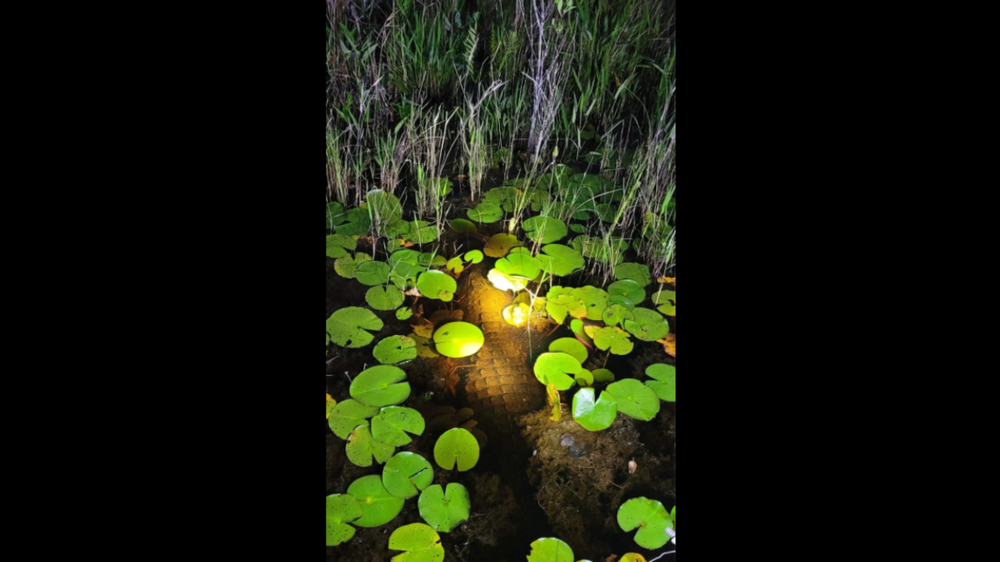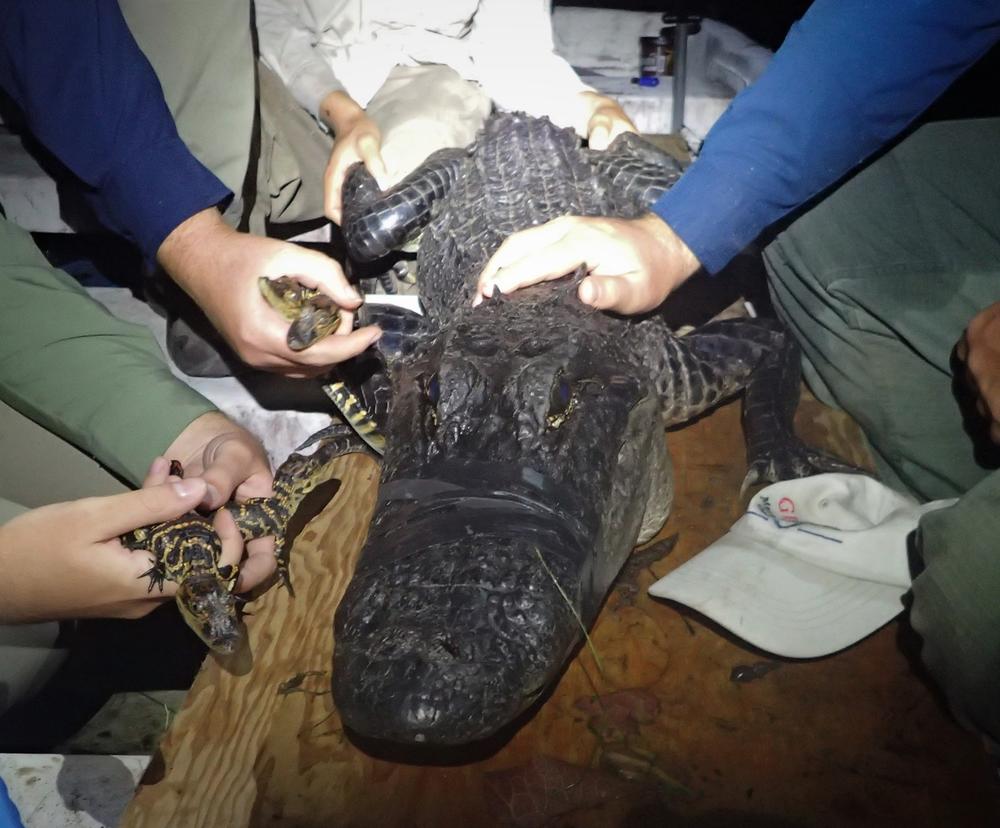
Caption
A large, sneaky alligator tried hiding from researchers in a Georgia swamp by submerging itself. It can be seen just below the surface in this photo.
Credit: UGA Coastal Ecology Lab

A large, sneaky alligator tried hiding from researchers in a Georgia swamp by submerging itself. It can be seen just below the surface in this photo.
Alligator infested swamps are no place to be after dark, and ample proof showed up online this week.
It’s a photo of lily pads in Georgia’s massive Okefenokee Swamp, but closer inspection reveals something alarming just below.
A group of biologists was catching alligators for a genetics study when they decided to focus their spotlight on the water surface. It was then they saw a large alligator sitting perfectly still, its rough skin blending with the muddy water.
The alligator was either hiding from them — or waiting for them.
“This adult male thought he was sneaky and sunk just below the water, but due to our strong spotlights, we could still see him very well,” the Coastal Ecology Lab at the University of Georgia said on Facebook. “He is pictured below trying to hide among the lily pads.”
The biologists “elected” not to catch the alligator, having already dealt with a 10-foot male and a 7.5-foot female earlier in the night.
However, they did make plans to return and fit the reptile with a satellite tag for tracking in the 438,000-acre swamp.

This is one of the alligators the team captured and took samples from last week. It caught seven in all.
The lab said its “excursion” led to the capture of seven alligators, four of them “hatchlings” found near their mom. The biologists, who are specially trained to deal with gators, collected tissue and blood samples, and gathered measurements for a genetics database, officials said.
To say the team faced dangers in the dark is an understatement. The Okefenokee National Wildlife Refuge is home to multiple species of venomous snakes and insects, as well as “an estimated 10,000-13,000 gators,” according to Sherpa Guides.
“American alligators hunt predominantly at night,” the American Wildlife Federation says. “If large prey is captured, they drag it underwater, where it is drowned and devoured. Additionally, American alligators have an adaptation in throat called a glottis. This allows them to capture prey completely submerged in water.”
So why did the team go out at night?
Turns out alligators are more easily seen after dark due to something called “eyeshine,” the lab said.
Their eyes glow red when hit with light, according Alligatorleather.com. That means researchers can not only find their exact location, but can track their movements in the water.
This story comes to GPB through a reporting partnership with The Telegraph.